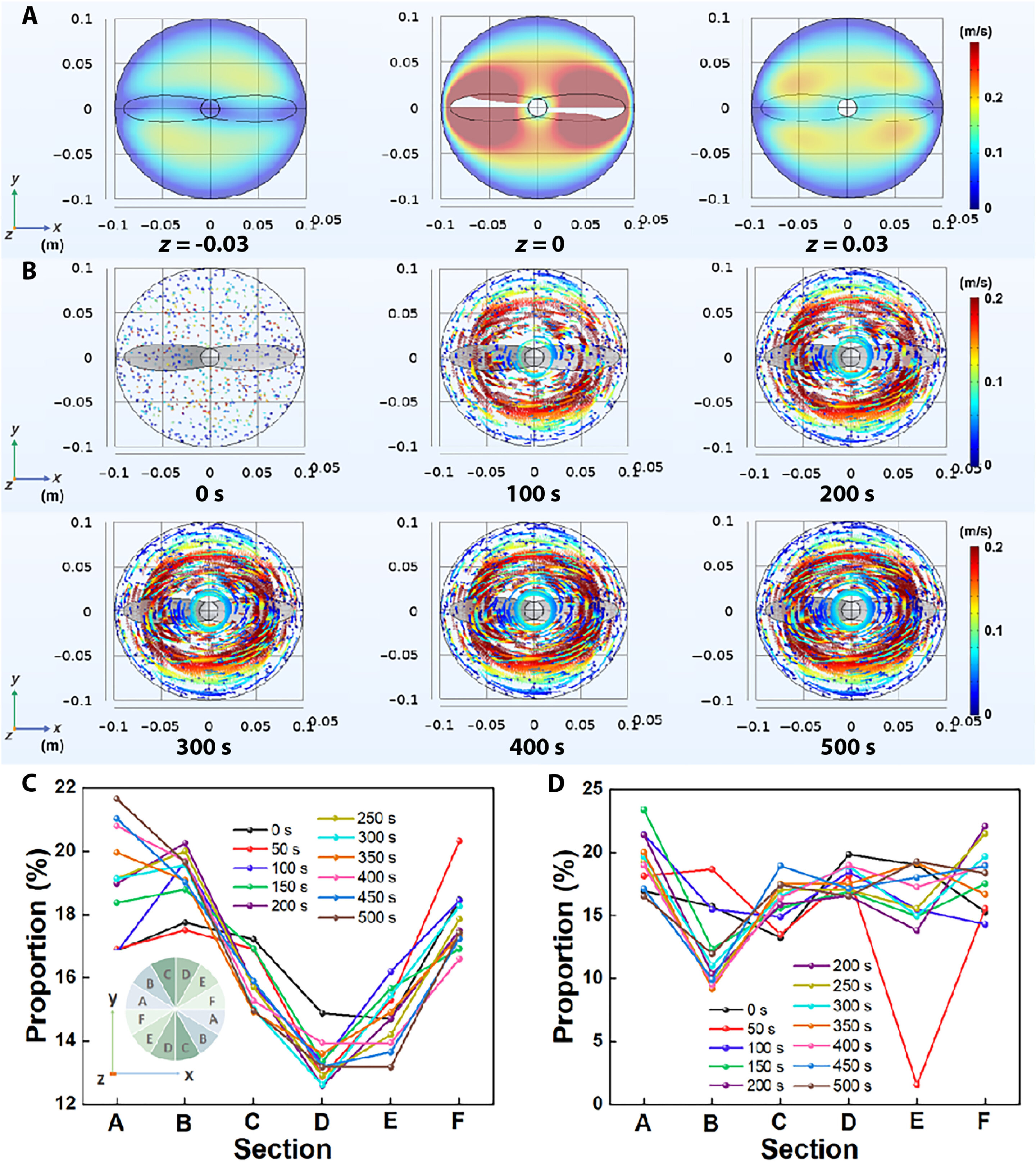Stirring can allow the dispersion of substances evenly in liquid. Einstein’s tea leaf paradox is a concept that shows how tea leaves can concentrate in a doughnut shape through a secondary flow effect during stirring. In a new study published in Science Advances, Zehui Zhang and colleagues in physics and engineering in China, demonstrated the Einstein’s tea leaf paradox (abbreviated as ETLP) induced concentration in nanofluids.
They accomplished this by simulating the nanoparticle trajectory under stirring to obtain a grayscale analysis of nanofluids under stirring and standing processes. The team applied the localized concentration to achieve ultrafast aggregation of gold nanoparticles to form gold aerogels. They adjusted the gold aerogels from about 10 to 200 nm and developed a constituent of extremely high purity and crystallinity to reveal potential applications in photocatalysis and surface-enhanced Raman scattering.
In 1926, Albert Einstein described a simple experimental observation while stirring tea, where the leaves followed a spiral trajectory towards the center of the cup. Accordingly, the gathering of tea leaves under stirring due to the secondary flow is useful to collect microscale particles in dispersion systems. Since nanoparticles with better stability usually move together with the fluid due to Brownian motion, during Einstein’s tea leaf paradox, the flow velocity paradox induced laminar flows, driving the localized concentration or aggregation of colloidal nanoparticles inside the thin flow.
Materials scientists have focused on metal aerogels such as gold, in catalysis, absorption, and device biocompatibility applications, as well as in electrochemistry. Typically, three main routes can be used to prepare metal aerogels. In this work, Zhang and colleagues showed the localized aggregation of gold nanoparticles and the regulation of the microstructures of gold aerogels. The Einstein’s tea leaf paradox-induced localized aggregation of metal particles pave the way to other types of gels or aerogel production.
The scientists studied the relationship between nanoparticle distribution and flow velocity in nanofluids by using COMSOL Multiphysics software to recreate the movement of nanoparticles in laminar flow under stirring. They monitored the nanoparticle trajectory after stirring for 500 seconds, where the nanoparticles in the middle moved faster with a longer trajectory. The high motion frequency and amplitude of the nanoparticles in the high-velocity regions promoted the encounters of nanoparticles to make them more concentrated or crosslinked.
2023-09-29 03:24:03
Post from phys.org rnrn
